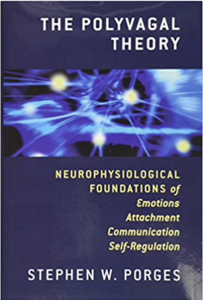
Yoga is a science and philosophy that dates back to the Vedic period around 1700 BCE. Modern western yoga has grown vastly and there are now so many disciplines and branches of yoga that it is easy to find a practice that suits you. But where does yoga fit into the curriculum? How can yoga really help pupils and teachers in school?
Physical Level
Yoga is a wellbeing toolkit on 4 levels, physical, energetic, mental and emotional. If we take the very basic level which is the physical body, yoga offers postures, sequences and practices that keep the body working at its optimum. Yoga increases pupil’s mobility, flexibility and strength. A study from ‘Child and adolescent psychiatry and mental health, 7, 37 (2013) that compared the differences between physical fitness and yoga taught in school. Both groups showed an increase in BMI but those pupils who were taught yoga had a significant increase in balance and muscle endurance. According to the 8 limbs of yoga, the actual postures in yoga are only one of those limbs. Therefore, yoga cannot be only categorised under physical education in the curriculum.

Energetic Level
What makes yoga much more than physical exercise is the breath. In yoga, we link breath and posture together and this is why it should not be taught like gymnastics. Each time we breathe slowly and fully, we activate the vagi nerves on either side of the lungs. When we do this, we improve certain functions such as visceral sensations, taste and the motor functions of swallowing and speech. Our parasympathetic system is triggered which improves digestion, lowers heart rate and blood pressure. Our brain-gut communication increases and inflammation decreases. Stephen W. Porges even shows that social interaction is improved through ventral vagal nerve activation due to helping a person’s facial muscles relax and therefore become more approachable in his book ‘The Polyvagal Theory.’ Yoga helps to regulate our arousal levels, helping a child to become more balanced in their emotions. Porges also shows that when yoga is practised together, we gain a deep sense of pleasure and connection.

Mental & Emotional Level
Ten years ago, nobody talked about mental health or emotional wellbeing. I had to present research, evidence and evaluations to headteachers and pupils to get yoga into schools. There was much scepticism, suspicion, lack of understanding and preconceptions on what yoga was. What is a religion? Was it a cult? What did children learn from it? How would they benefit?
Let’s explore why yoga benefits our mental health. In yoga, we have ethical intentions called yamas and niyamas which informs and directs all emotional response to stimuli, encouraging prosocial behavioural responses and a sense of wellbeing (Front Human Neuroscience, 2014; 8: 770). The yamas teach us how to treat ourselves and the niyamas guide our behaviour and interaction with others. Duration and consistency of yoga practice, positively correlate with our meaning of life and gratitude, showing yoga’s contribution to emotional, psychological and social wellbeing (Journal of Bodywork and Movement Therapies, 2014, 8 (2):183-9). A study in ‘The alternative health and medicine 2017’, found that yoga helps reorient a person towards finding meaning and purpose in life, where a person encounters a “steadfast type of joy rather than momentary pleasure”.
The second yoga sutra by Patanjali states ‘yoga is the stilling of the modifications of the mind’. We train our mind to observe, discern and detach from the constant flow of emotions, thoughts, memories and visuals of the mind. We learn to do this training of the mind through posture, breathing, meditation and other yoga practices.

I see the benefits of Yoga for Children EVERYDAY
Aside from all the evidence, I see first-hand on a daily basis the positive effects it brings to children and teachers too when they join in! They come into the hall loud, hyper, distracted, emotional and find it hard to listen and sit still. After 30-40 minutes of yoga depending on the age, they leave calm, focused, full of gratitude, kinder and most importantly happier. If yoga was in the curriculum, we would be equipping our pupils with a wellbeing toolkit that would last for the rest of their life.

